 Porter’s Five Forces analytical framework developed by Michael Porter (1979)[1] represents five individual forces that shape the overall extent of competition in the industry. Apple Porter’s Five Forces are represented in Figure 1 below: Figure 1 Porter’s Five Forces Threat of new entrants in Apple Porter’s Five Forces Analysis Threat of new entrants into consumer electronics industry is not substantial. The following factors, among others, determine the threat of new entrants into the industry to compete with Apple: 1. Massive capital requirements. Manufacturing technological devices and producing operating systems require massive capital investments. As illustrated in Table 1 below, the top players in the market invest billions of dollars in R&D in order to keep the pipeline of new products and services active. New market entrants will have to produce new products and services that will have to compete with products and services of top players that invest billions of dollars every year in R&D. Rank Company R&D spending (USD) 1 Amazon 70.3 billion 2 Alphabet 38.1 billion 3 Meta Platforms 34.0 billion 4 Apple 25.3 billion 5 Microsoft 23.0 billion 6 Samsung Electronics 18.2 billion 7 Intel 17.5 billion 8 Roche 16.0 billion 9 Volkswagen 14.0 billion 10 Johnson & Johnson 14.0 billion Table 1 Top R&D spenders among technology companies in 2022 Moreover, capital is needed to obtain resources in general and to attract human resources and talented employees in particular. Accordingly, it is safe to argue that access to capital can prove to be a substantial entry barrier for new businesses. 2. Economies of scale. Economies of scale are substantial entry barrier into consumer electronics and tech industry. New players will find it difficult to compete with established global brands such as Apple, Samsung, Google and HTC that are able to gain cost advantage…
Porter’s Five Forces analytical framework developed by Michael Porter (1979)[1] represents five individual forces that shape the overall extent of competition in the industry. Apple Porter’s Five Forces are represented in Figure 1 below: Figure 1 Porter’s Five Forces Threat of new entrants in Apple Porter’s Five Forces Analysis Threat of new entrants into consumer electronics industry is not substantial. The following factors, among others, determine the threat of new entrants into the industry to compete with Apple: 1. Massive capital requirements. Manufacturing technological devices and producing operating systems require massive capital investments. As illustrated in Table 1 below, the top players in the market invest billions of dollars in R&D in order to keep the pipeline of new products and services active. New market entrants will have to produce new products and services that will have to compete with products and services of top players that invest billions of dollars every year in R&D. Rank Company R&D spending (USD) 1 Amazon 70.3 billion 2 Alphabet 38.1 billion 3 Meta Platforms 34.0 billion 4 Apple 25.3 billion 5 Microsoft 23.0 billion 6 Samsung Electronics 18.2 billion 7 Intel 17.5 billion 8 Roche 16.0 billion 9 Volkswagen 14.0 billion 10 Johnson & Johnson 14.0 billion Table 1 Top R&D spenders among technology companies in 2022 Moreover, capital is needed to obtain resources in general and to attract human resources and talented employees in particular. Accordingly, it is safe to argue that access to capital can prove to be a substantial entry barrier for new businesses. 2. Economies of scale. Economies of scale are substantial entry barrier into consumer electronics and tech industry. New players will find it difficult to compete with established global brands such as Apple, Samsung, Google and HTC that are able to gain cost advantage…Specialized on Data processing, Data management Implementation plan, Data Collection tools - electronic and paper base, Data cleaning specifications, Data extraction, Data transformation, Data load, Analytical Datasets, and Data analysis. BJ Data Tech Solutions teaches on design and developing Electronic Data Collection Tools using CSPro, and STATA commands for data manipulation. Setting up Data Management systems using modern data technologies such as Relational Databases, C#, PHP and Android.
Friday, June 30, 2023
Apple Porters Five Forces Analysis
 Porter’s Five Forces analytical framework developed by Michael Porter (1979)[1] represents five individual forces that shape the overall extent of competition in the industry. Apple Porter’s Five Forces are represented in Figure 1 below: Figure 1 Porter’s Five Forces Threat of new entrants in Apple Porter’s Five Forces Analysis Threat of new entrants into consumer electronics industry is not substantial. The following factors, among others, determine the threat of new entrants into the industry to compete with Apple: 1. Massive capital requirements. Manufacturing technological devices and producing operating systems require massive capital investments. As illustrated in Table 1 below, the top players in the market invest billions of dollars in R&D in order to keep the pipeline of new products and services active. New market entrants will have to produce new products and services that will have to compete with products and services of top players that invest billions of dollars every year in R&D. Rank Company R&D spending (USD) 1 Amazon 70.3 billion 2 Alphabet 38.1 billion 3 Meta Platforms 34.0 billion 4 Apple 25.3 billion 5 Microsoft 23.0 billion 6 Samsung Electronics 18.2 billion 7 Intel 17.5 billion 8 Roche 16.0 billion 9 Volkswagen 14.0 billion 10 Johnson & Johnson 14.0 billion Table 1 Top R&D spenders among technology companies in 2022 Moreover, capital is needed to obtain resources in general and to attract human resources and talented employees in particular. Accordingly, it is safe to argue that access to capital can prove to be a substantial entry barrier for new businesses. 2. Economies of scale. Economies of scale are substantial entry barrier into consumer electronics and tech industry. New players will find it difficult to compete with established global brands such as Apple, Samsung, Google and HTC that are able to gain cost advantage…
Porter’s Five Forces analytical framework developed by Michael Porter (1979)[1] represents five individual forces that shape the overall extent of competition in the industry. Apple Porter’s Five Forces are represented in Figure 1 below: Figure 1 Porter’s Five Forces Threat of new entrants in Apple Porter’s Five Forces Analysis Threat of new entrants into consumer electronics industry is not substantial. The following factors, among others, determine the threat of new entrants into the industry to compete with Apple: 1. Massive capital requirements. Manufacturing technological devices and producing operating systems require massive capital investments. As illustrated in Table 1 below, the top players in the market invest billions of dollars in R&D in order to keep the pipeline of new products and services active. New market entrants will have to produce new products and services that will have to compete with products and services of top players that invest billions of dollars every year in R&D. Rank Company R&D spending (USD) 1 Amazon 70.3 billion 2 Alphabet 38.1 billion 3 Meta Platforms 34.0 billion 4 Apple 25.3 billion 5 Microsoft 23.0 billion 6 Samsung Electronics 18.2 billion 7 Intel 17.5 billion 8 Roche 16.0 billion 9 Volkswagen 14.0 billion 10 Johnson & Johnson 14.0 billion Table 1 Top R&D spenders among technology companies in 2022 Moreover, capital is needed to obtain resources in general and to attract human resources and talented employees in particular. Accordingly, it is safe to argue that access to capital can prove to be a substantial entry barrier for new businesses. 2. Economies of scale. Economies of scale are substantial entry barrier into consumer electronics and tech industry. New players will find it difficult to compete with established global brands such as Apple, Samsung, Google and HTC that are able to gain cost advantage…Thursday, June 29, 2023
Apple Marketing Communication Mix
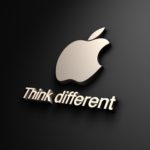 Apple marketing communication mix explains the company’s stance towards individual elements of the marketing communication mix such as print and media advertising, sales promotions, events and experiences, public relations, direct marketing and personal selling. The main aim behind Apple marketing communications mix is to communicate the marketing message of the brand to the target customer segment through elements listed above. Apple is effective in using elements of the marketing communication mix in an integrated manner to ensure the consistency of the marketing message. Apple Print and Media Advertising Since its foundation more than 40 years ago Apple has been using print and media advertising extensively to promote the brand in general and new products in particular. Some of the ads by the tech giant have become truly iconic raising the bar for advertisement globally. The following is the list of the most memorable print and media advertising campaigns launched by Apple: “1984” campaign directed by Ridley Scott and first shown during 1984 Super Bowl is widely considered as one of the most successful marketing campaigns of all times “The Quadra Revolution” is 1991 campaign that was a successful attempt by the tech giant to further itself ahead of the competition at the beginning of the digital age of 90s “Misunderstood”, a Christmas ad of 2013 won Emmy Award for the year’s most “Outstanding Commercial.” “40 Years in 40 Seconds” is a viral video that chronicles 40 years of the company in 40 seconds “Meu Bloco na Rua” (2017) is the latest ad released in Brazil for the Rio Carnival, highlighting the iPhone 7 Plus’ new portrait photography mode Apple also uses celebrity endorsements in print and media advertising extensively. In the past Apple’s ‘Think Different’ print and media advertising materials featured the images of innovators and pioneers in different areas…
Apple marketing communication mix explains the company’s stance towards individual elements of the marketing communication mix such as print and media advertising, sales promotions, events and experiences, public relations, direct marketing and personal selling. The main aim behind Apple marketing communications mix is to communicate the marketing message of the brand to the target customer segment through elements listed above. Apple is effective in using elements of the marketing communication mix in an integrated manner to ensure the consistency of the marketing message. Apple Print and Media Advertising Since its foundation more than 40 years ago Apple has been using print and media advertising extensively to promote the brand in general and new products in particular. Some of the ads by the tech giant have become truly iconic raising the bar for advertisement globally. The following is the list of the most memorable print and media advertising campaigns launched by Apple: “1984” campaign directed by Ridley Scott and first shown during 1984 Super Bowl is widely considered as one of the most successful marketing campaigns of all times “The Quadra Revolution” is 1991 campaign that was a successful attempt by the tech giant to further itself ahead of the competition at the beginning of the digital age of 90s “Misunderstood”, a Christmas ad of 2013 won Emmy Award for the year’s most “Outstanding Commercial.” “40 Years in 40 Seconds” is a viral video that chronicles 40 years of the company in 40 seconds “Meu Bloco na Rua” (2017) is the latest ad released in Brazil for the Rio Carnival, highlighting the iPhone 7 Plus’ new portrait photography mode Apple also uses celebrity endorsements in print and media advertising extensively. In the past Apple’s ‘Think Different’ print and media advertising materials featured the images of innovators and pioneers in different areas…Apple Segmentation Targeting and Positioning
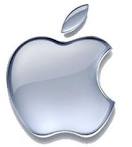 Apple segmentation, targeting and positioning represents the core of its marketing efforts. Segmentation, targeting and positioning is needed because no company or product can be all things to all people. Apple segmentation targeting and positioning initiatives include the following stages: 1. Segmenting the market. Segmentation involves dividing population into groups according to certain characteristics. Specifically, customers can be segmented on the basis of their place of living, demographic variables, behavioural traits, psychographic characteristics and other variables. Market segments need to be measurable, accessible, sustainable and actionable in order to be used for marketing purposes. 2. Targeting selected segment(s). This stage involves identifying segments that are most attractive for the business. In other words, targeting implies choosing specific groups identified as a result of segmentation to sell products to. The multinational technology company positions itself as a premium brand offering products and services with advanced functions and capabilities for additional costs. Accordingly, Apple target customer segment comprise well-off individuals who are willing to pay extra for technology products and services with advanced design, functions and capabilities. A common set of characteristics shared by Apple target customer segment include appreciating design, quality and performance of technology products and services over their prices. 3. Positioning the offering. Positioning refers to the selection of the marketing mix that is the most suitable for the target customer segment. It is the final process, where companies attempt to associate their products and services with needs and wants of selected customer segment. Apple targets its customer segment by tailoring products, services and overall business approach to appeal to the members of segment to a maximum extent. Under the leadership of late Steve Jobs, Apple mainly used mono-segment type of positioning, appealing to the needs and wants of a single customer segment. However, after Tim Cook became CEO,…
Apple segmentation, targeting and positioning represents the core of its marketing efforts. Segmentation, targeting and positioning is needed because no company or product can be all things to all people. Apple segmentation targeting and positioning initiatives include the following stages: 1. Segmenting the market. Segmentation involves dividing population into groups according to certain characteristics. Specifically, customers can be segmented on the basis of their place of living, demographic variables, behavioural traits, psychographic characteristics and other variables. Market segments need to be measurable, accessible, sustainable and actionable in order to be used for marketing purposes. 2. Targeting selected segment(s). This stage involves identifying segments that are most attractive for the business. In other words, targeting implies choosing specific groups identified as a result of segmentation to sell products to. The multinational technology company positions itself as a premium brand offering products and services with advanced functions and capabilities for additional costs. Accordingly, Apple target customer segment comprise well-off individuals who are willing to pay extra for technology products and services with advanced design, functions and capabilities. A common set of characteristics shared by Apple target customer segment include appreciating design, quality and performance of technology products and services over their prices. 3. Positioning the offering. Positioning refers to the selection of the marketing mix that is the most suitable for the target customer segment. It is the final process, where companies attempt to associate their products and services with needs and wants of selected customer segment. Apple targets its customer segment by tailoring products, services and overall business approach to appeal to the members of segment to a maximum extent. Under the leadership of late Steve Jobs, Apple mainly used mono-segment type of positioning, appealing to the needs and wants of a single customer segment. However, after Tim Cook became CEO,…Sunday, June 25, 2023
Nvidia Marketing Communication Mix
 Nvidia marketing communication mix includes the use of various communication channels to transmit the marketing message to the target customer segment. These channels are print and media advertising, sales promotions, events and experiences, public relations and direct marketing. Nvidia Print and Media Advertising Nvidia uses print and media as an effective advertising platform systematically. Specifically, the multinational technology company runs advertising campaigns on TV and radio channels, as well as magazines and newspapers popular with their target customer segment. Additionally, Nvidia places large billboards in crowded area in large metropolitan cities. The software and fables company also uses viral marketing extensively on popular social media platforms such as Twitter, LinkedIn, and YouTube. Nvidia also uses product placement strategy by Nvidia include a science fiction movie “Blade Runner 2049” released in 2017 and Steven Spielberg film “Ready Player One” released in 2018. Nvidia Sales Promotions Nvidia uses various sales promotions techniques regularly to increase its revenues. Specifically, the multinational technology company uses the following sales promotions techniques: – Seasonal sales promotions. Nvidia uses seasonal sales promotions to boost its revenues during holidays and festive seasons. Additionally, the company runs promotions during major industry events such as the Consumer Electronics Show or the Game Developers Conference. – Money off coupons. Nvidia does not offer money off coupons to end-users directly, but its distributors use this particular sales promotions technique regularly. – Free gifts. The company offers free gifts occasionally as part of its marketing strategy. For example, in 2023 Nvidia offered Marvel’s Midnight Suns Captain Marvel’sMedieval Marvel Suit free of charge to users of graphics cards GeForce GTX 10 and above. Nvidia Corporation Report contains a full analysis of Nvidia marketing communication mix and Nvidia marketing strategy in general. The report illustrates the application of the major analytical strategic…
Nvidia marketing communication mix includes the use of various communication channels to transmit the marketing message to the target customer segment. These channels are print and media advertising, sales promotions, events and experiences, public relations and direct marketing. Nvidia Print and Media Advertising Nvidia uses print and media as an effective advertising platform systematically. Specifically, the multinational technology company runs advertising campaigns on TV and radio channels, as well as magazines and newspapers popular with their target customer segment. Additionally, Nvidia places large billboards in crowded area in large metropolitan cities. The software and fables company also uses viral marketing extensively on popular social media platforms such as Twitter, LinkedIn, and YouTube. Nvidia also uses product placement strategy by Nvidia include a science fiction movie “Blade Runner 2049” released in 2017 and Steven Spielberg film “Ready Player One” released in 2018. Nvidia Sales Promotions Nvidia uses various sales promotions techniques regularly to increase its revenues. Specifically, the multinational technology company uses the following sales promotions techniques: – Seasonal sales promotions. Nvidia uses seasonal sales promotions to boost its revenues during holidays and festive seasons. Additionally, the company runs promotions during major industry events such as the Consumer Electronics Show or the Game Developers Conference. – Money off coupons. Nvidia does not offer money off coupons to end-users directly, but its distributors use this particular sales promotions technique regularly. – Free gifts. The company offers free gifts occasionally as part of its marketing strategy. For example, in 2023 Nvidia offered Marvel’s Midnight Suns Captain Marvel’sMedieval Marvel Suit free of charge to users of graphics cards GeForce GTX 10 and above. Nvidia Corporation Report contains a full analysis of Nvidia marketing communication mix and Nvidia marketing strategy in general. The report illustrates the application of the major analytical strategic…Friday, June 23, 2023
Nvidia Ecosystem Overview
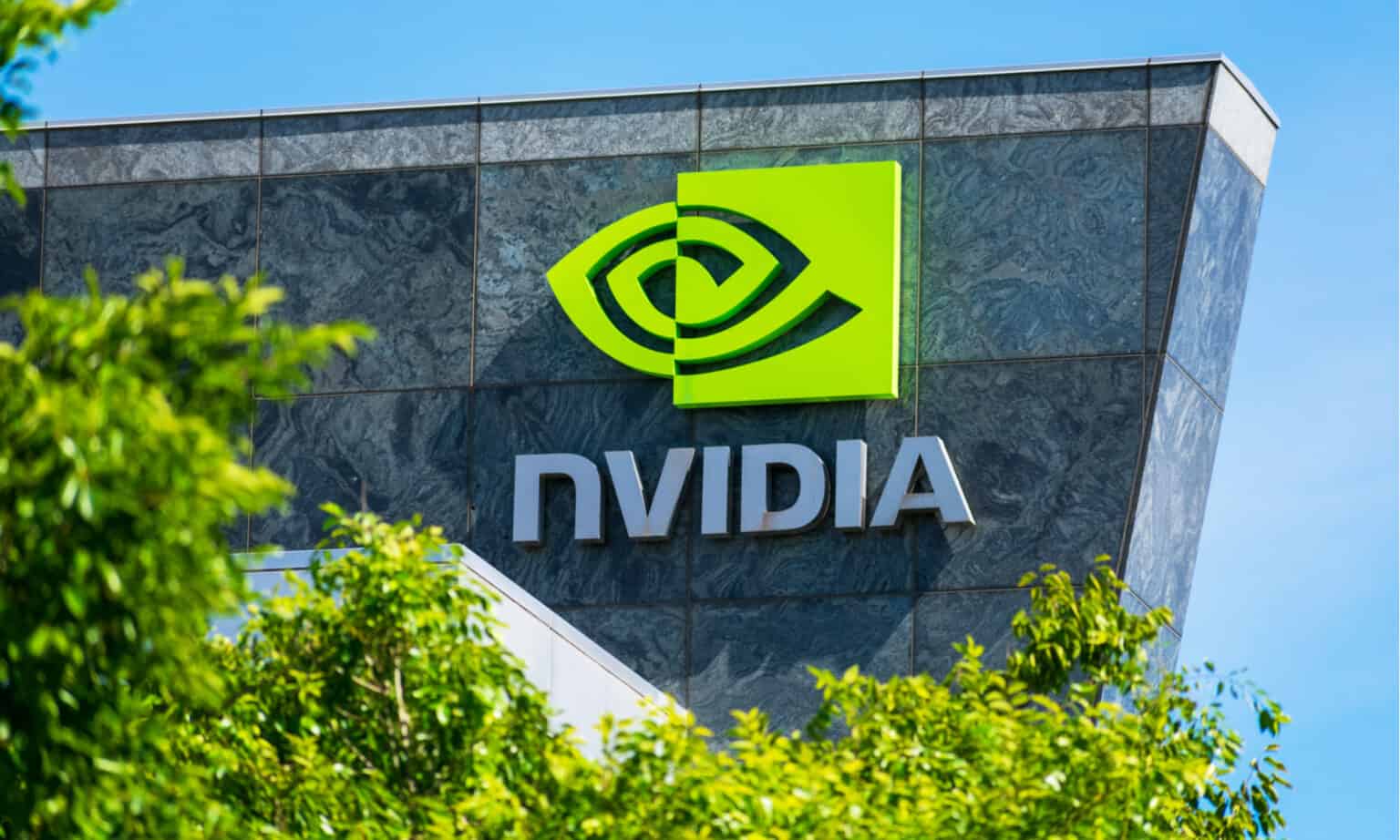 Nvidia ecosystem refers to the network of interconnected components, technologies, and partners that work together to support the company’s products and services. The following are the key elements of Nvidia ecosystem: 1. Products. The core of Nvidia’s ecosystem is its products, which include graphics cards, data centre products, and system-on-a-chip (SoC) products. These products form the foundation of the ecosystem and are used by developers, data scientists, and other users to create and innovate. 2. Developer Tools and Platforms. The company offers a range of developer tools and platforms to support the development of software and applications that leverage Nvidia’s products. These tools and platforms include CUDA, TensorRT, and the Nvidia Deep Learning Institute. 3. Partner Network. Nvidia has a broad partner network that includes hardware and software vendors, cloud providers, system integrators, and other partners. These partners help to integrate Nvidia’s products and technologies into a wide range of solutions and services, further strengthening its ecosystem. 4. AI and HPC Applications. Nvidia’s ecosystem is used to support a wide range of artificial intelligence (AI) and high-performance computing (HPC) applications. These include, but not limited to deep learning, computer vision, and scientific simulations. These applications leverage Nvidia’s products and technologies to achieve breakthrough performance and efficiency. 5. Community and Support. The multinational technology company has a strong community of users and developers who support each other through forums, user groups, and other online communities. The company also offers customer support services to help users troubleshoot issues and optimize their use of Nvidia’s products and technologies. To summarize, Nvidia ecosystem is dynamic and comprises interconnected network of products, technologies, partners, and communities that work together to support innovation and growth. By fostering a strong ecosystem, the company aims to drive innovation and accelerate the adoption of AI and HPC…
Nvidia ecosystem refers to the network of interconnected components, technologies, and partners that work together to support the company’s products and services. The following are the key elements of Nvidia ecosystem: 1. Products. The core of Nvidia’s ecosystem is its products, which include graphics cards, data centre products, and system-on-a-chip (SoC) products. These products form the foundation of the ecosystem and are used by developers, data scientists, and other users to create and innovate. 2. Developer Tools and Platforms. The company offers a range of developer tools and platforms to support the development of software and applications that leverage Nvidia’s products. These tools and platforms include CUDA, TensorRT, and the Nvidia Deep Learning Institute. 3. Partner Network. Nvidia has a broad partner network that includes hardware and software vendors, cloud providers, system integrators, and other partners. These partners help to integrate Nvidia’s products and technologies into a wide range of solutions and services, further strengthening its ecosystem. 4. AI and HPC Applications. Nvidia’s ecosystem is used to support a wide range of artificial intelligence (AI) and high-performance computing (HPC) applications. These include, but not limited to deep learning, computer vision, and scientific simulations. These applications leverage Nvidia’s products and technologies to achieve breakthrough performance and efficiency. 5. Community and Support. The multinational technology company has a strong community of users and developers who support each other through forums, user groups, and other online communities. The company also offers customer support services to help users troubleshoot issues and optimize their use of Nvidia’s products and technologies. To summarize, Nvidia ecosystem is dynamic and comprises interconnected network of products, technologies, partners, and communities that work together to support innovation and growth. By fostering a strong ecosystem, the company aims to drive innovation and accelerate the adoption of AI and HPC…Thursday, June 22, 2023
Nvidia McKinsey 7S Model
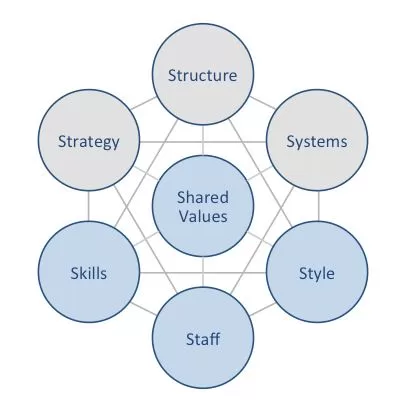 Nvidia McKinsey 7S model illustrates the ways in which seven elements of businesses can be aligned to increase effectiveness. According to the framework strategy, structure and systems represent hard elements, whereas shared values, skills, style and staff are soft elements. McKinsey 7S model stresses the presence of strong links between elements in a way that a change in one element causes changes in others. The model positions shared values are positioned at the core remaining elements, because shared values guide employee behaviour with implications on their performance. McKinsey 7S model Hard Elements in Nvidia McKinsey 7S Model Strategy. Nvidia business strategy benefits from first mover advantage systematically. This has been the case with GPU, Computer Unified Device Architecture (CUDA) and invented deep learning hardware accelerators, such as the Tesla V100 and T4 GPUs and a range of other products. However the sustainability of this strategy in the long-term perspective requires the regular pipeline of new products through effective investment in research and development. Structure. As one of the largest multinational technology companies in the world Nvidia organizational structure integrates the elements of functional and hybrid structures. Within the company business processes are divided into various divisions with highly specialised employees with the relevant skills and competencies attached into respective divisions. Furthermore, the senior management forms temporary project groups to develop new products or for other initiatives and group members report to multiple superiors for the duration of project. Systems. Nvidia depends on a wide range of systems for the business to operate smoothly. These include, but not limited to employee recruitment and selection, team development and orientation, transaction processing, customer relationship management, business intelligence and knowledge management. Each system has its KPIs and controls in place and they are monitored systematically. Nvidia Corporation Report contains a full analysis of Nvidia…
Nvidia McKinsey 7S model illustrates the ways in which seven elements of businesses can be aligned to increase effectiveness. According to the framework strategy, structure and systems represent hard elements, whereas shared values, skills, style and staff are soft elements. McKinsey 7S model stresses the presence of strong links between elements in a way that a change in one element causes changes in others. The model positions shared values are positioned at the core remaining elements, because shared values guide employee behaviour with implications on their performance. McKinsey 7S model Hard Elements in Nvidia McKinsey 7S Model Strategy. Nvidia business strategy benefits from first mover advantage systematically. This has been the case with GPU, Computer Unified Device Architecture (CUDA) and invented deep learning hardware accelerators, such as the Tesla V100 and T4 GPUs and a range of other products. However the sustainability of this strategy in the long-term perspective requires the regular pipeline of new products through effective investment in research and development. Structure. As one of the largest multinational technology companies in the world Nvidia organizational structure integrates the elements of functional and hybrid structures. Within the company business processes are divided into various divisions with highly specialised employees with the relevant skills and competencies attached into respective divisions. Furthermore, the senior management forms temporary project groups to develop new products or for other initiatives and group members report to multiple superiors for the duration of project. Systems. Nvidia depends on a wide range of systems for the business to operate smoothly. These include, but not limited to employee recruitment and selection, team development and orientation, transaction processing, customer relationship management, business intelligence and knowledge management. Each system has its KPIs and controls in place and they are monitored systematically. Nvidia Corporation Report contains a full analysis of Nvidia…Wednesday, June 21, 2023
Nvidia Value Chain Analysis
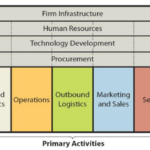 Nvidia value chain analysis is an analytical framework that assists in identifying business activities that can create value and competitive advantage to the business. Specifically, business leaders can create competitive advantage through dividing the business into various activities and analysing each activity individually from value creation perspective. Figure below illustrates the essence of Nvidia value chain analysis. Value chain analysis Primary Activities in Nvidia Value Chain Analysis Nvidia Inbound logistics Nvidia inbound logistics involves managing the supply chain of components and raw materials into the premises of its contract manufacturers. The multinational technology company performs quality checks of semiconductors and other spare parts using test equipment purchased from industry-leading suppliers such as Advantest America Inc. Nvidia benefits from the economies of scale in inbound logistics activities due to the large amount of spare parts and components it purchases. Furthermore, the company has strategic relationships with its key suppliers in place and these relationships play an instrumental role in new product development. Nvidia Operations Nvidia employs fabless manufacturing strategy. It employs third party companies outside of United States for all phases of the manufacturing process, including wafer fabrication, assembly, testing, and packaging.[1] Nvidia does not engage in any of these activities directly and chooses to focus the design, marketing and distribution of its products. The company works with world-class manufacturers to produce its products. Semiconductor wafers are produced by leading companies such as Taiwan Semiconductor Manufacturing Company Limited and Samsung Electronics Co. Ltd, adapter card products and switch systems are produced by the likes of Flex Ltd., Jabil Inc., and Universal Scientific Industrial Co., Ltd. and Fabrinet manufactures Nvidia cables. Assembly, testing and packaging of products and platforms are done by Amkor Technology, King Yuan Electronics Co., Ltd., Omni Logistics, LLC, Siliconware Precision Industries Company Ltd., Wistron Corporation…
Nvidia value chain analysis is an analytical framework that assists in identifying business activities that can create value and competitive advantage to the business. Specifically, business leaders can create competitive advantage through dividing the business into various activities and analysing each activity individually from value creation perspective. Figure below illustrates the essence of Nvidia value chain analysis. Value chain analysis Primary Activities in Nvidia Value Chain Analysis Nvidia Inbound logistics Nvidia inbound logistics involves managing the supply chain of components and raw materials into the premises of its contract manufacturers. The multinational technology company performs quality checks of semiconductors and other spare parts using test equipment purchased from industry-leading suppliers such as Advantest America Inc. Nvidia benefits from the economies of scale in inbound logistics activities due to the large amount of spare parts and components it purchases. Furthermore, the company has strategic relationships with its key suppliers in place and these relationships play an instrumental role in new product development. Nvidia Operations Nvidia employs fabless manufacturing strategy. It employs third party companies outside of United States for all phases of the manufacturing process, including wafer fabrication, assembly, testing, and packaging.[1] Nvidia does not engage in any of these activities directly and chooses to focus the design, marketing and distribution of its products. The company works with world-class manufacturers to produce its products. Semiconductor wafers are produced by leading companies such as Taiwan Semiconductor Manufacturing Company Limited and Samsung Electronics Co. Ltd, adapter card products and switch systems are produced by the likes of Flex Ltd., Jabil Inc., and Universal Scientific Industrial Co., Ltd. and Fabrinet manufactures Nvidia cables. Assembly, testing and packaging of products and platforms are done by Amkor Technology, King Yuan Electronics Co., Ltd., Omni Logistics, LLC, Siliconware Precision Industries Company Ltd., Wistron Corporation…Nvidia Porters Five Forces Analysis
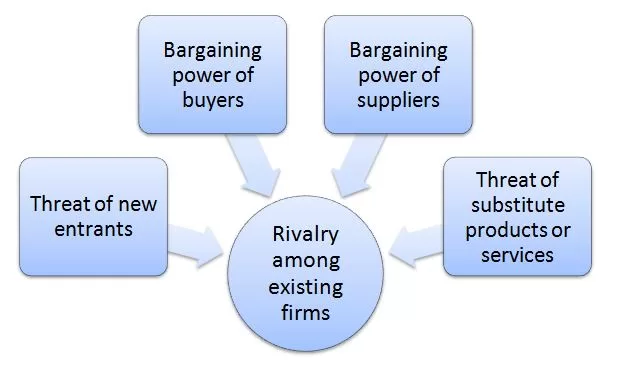 Porter’s Five Forces analytical framework developed by Michael Porter (1979)[1] consists of five individual forces that shape an overall extent of competition in the industry. Nvidia Porters Five Forces are illustrated in figure below: Porter’s Five Forces Threat of new entrants in Nvidia Porter’s Five Forces Analysis Threat of new entrants into graphics processing unit (GPU) industry is low. The below are the main factors that determine the level of threat of new entrants: 1. Time of entry. GPUs are highly saturated market with dominant market players already in the business for decades. Moreover, customer loyalty towards dominant players such as Advanced Micro Devices (AMD, Intel Corporation, Qualcomm Inc., Broadcom Inc. and Arm Holdings (a subsidiary of Softbank Group) is high this fact crates entry barrier for potential market entrants. 2. Massive investments. GPU producing requires massive capital requirements of millions of dollars. It will be very challenging for potential market entrance to secure funding for producing GPUs unless they offer unique competitive advantages with the potential to disrupt the market. 3. Specialist knowledge. GPUs are highly advanced technological products. The production requires highly specialist knowledge and technological know-how. New market entrants will face substantial difficulties in terms of finding employees with specialist knowledge who will agree to join a new company in a highly saturated market. Bargaining power of buyers in Nvidia Porter’s Five Forces Analysis The bargaining power of buyers for Nvidia products is generally insubstantial. The following considerations need to be taken into account in this regard: 1. Switching costs. Nvidia’s products are often integrated into larger systems and it is often difficult to replace these products with similar products produced by competitors due to massive costs and expertise knowledge involved. Such a situation limits buyer bargaining power with positive implications for Nvidia. 2.…
Porter’s Five Forces analytical framework developed by Michael Porter (1979)[1] consists of five individual forces that shape an overall extent of competition in the industry. Nvidia Porters Five Forces are illustrated in figure below: Porter’s Five Forces Threat of new entrants in Nvidia Porter’s Five Forces Analysis Threat of new entrants into graphics processing unit (GPU) industry is low. The below are the main factors that determine the level of threat of new entrants: 1. Time of entry. GPUs are highly saturated market with dominant market players already in the business for decades. Moreover, customer loyalty towards dominant players such as Advanced Micro Devices (AMD, Intel Corporation, Qualcomm Inc., Broadcom Inc. and Arm Holdings (a subsidiary of Softbank Group) is high this fact crates entry barrier for potential market entrants. 2. Massive investments. GPU producing requires massive capital requirements of millions of dollars. It will be very challenging for potential market entrance to secure funding for producing GPUs unless they offer unique competitive advantages with the potential to disrupt the market. 3. Specialist knowledge. GPUs are highly advanced technological products. The production requires highly specialist knowledge and technological know-how. New market entrants will face substantial difficulties in terms of finding employees with specialist knowledge who will agree to join a new company in a highly saturated market. Bargaining power of buyers in Nvidia Porter’s Five Forces Analysis The bargaining power of buyers for Nvidia products is generally insubstantial. The following considerations need to be taken into account in this regard: 1. Switching costs. Nvidia’s products are often integrated into larger systems and it is often difficult to replace these products with similar products produced by competitors due to massive costs and expertise knowledge involved. Such a situation limits buyer bargaining power with positive implications for Nvidia. 2.…Sunday, June 18, 2023
Nvidia Segmentation Targeting & Positioning
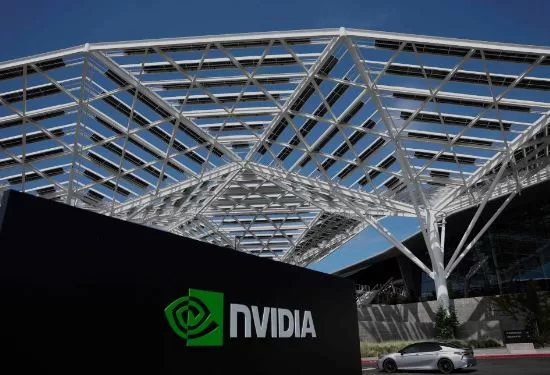 Nvidia segmentation, targeting, and positioning (STP) is a strategic approach to marketing that involves dividing the market into smaller groups of consumers (segmentation), selecting one or more of these groups to target with a specific marketing mix (targeting), and then positioning the product or service in the minds of consumers in a way that differentiates it from the competition (positioning). Nvidia uses the following types of product positioning. – Anticipatory positioning. Anticipatory product positioning is a strategy in which a company positions its products or services in a way that anticipates future trends or needs in the market. Nvidia has used this strategy effectively by positioning its products in a way that anticipates the increasing demand for high-performance computing solutions and emerging technologies such as artificial intelligence and autonomous vehicles. For example, Nvidia recognized in early 1990s the potential of AI and positioned its products accordingly, investing heavily in research and development to create GPUs that are specifically designed to accelerate AI workloads. As a result, Nvidia has become a key player in the AI market, with its GPUs powering many of the most advanced AI applications in industries such as healthcare, finance, and automotive. – Quality product positioning. Quality product positioning is a strategy in which a company positions its products or services as high-quality, reliable, and superior to those of its competitors. Nvidia has used this strategy effectively by emphasizing the quality and reliability of its products and by investing in research and development to continually improve its offerings. Accordingly the company creates high-performance GPUs for a wide range of applications, from gaming to data centre workloads. The following table illustrates Nvidia segmentation, targeting and positioning: Type of segmentation Segmentation criteria Nvidia target customer segment Geographic Region Taiwan, China, United States, other countries Density Urban…
Nvidia segmentation, targeting, and positioning (STP) is a strategic approach to marketing that involves dividing the market into smaller groups of consumers (segmentation), selecting one or more of these groups to target with a specific marketing mix (targeting), and then positioning the product or service in the minds of consumers in a way that differentiates it from the competition (positioning). Nvidia uses the following types of product positioning. – Anticipatory positioning. Anticipatory product positioning is a strategy in which a company positions its products or services in a way that anticipates future trends or needs in the market. Nvidia has used this strategy effectively by positioning its products in a way that anticipates the increasing demand for high-performance computing solutions and emerging technologies such as artificial intelligence and autonomous vehicles. For example, Nvidia recognized in early 1990s the potential of AI and positioned its products accordingly, investing heavily in research and development to create GPUs that are specifically designed to accelerate AI workloads. As a result, Nvidia has become a key player in the AI market, with its GPUs powering many of the most advanced AI applications in industries such as healthcare, finance, and automotive. – Quality product positioning. Quality product positioning is a strategy in which a company positions its products or services as high-quality, reliable, and superior to those of its competitors. Nvidia has used this strategy effectively by emphasizing the quality and reliability of its products and by investing in research and development to continually improve its offerings. Accordingly the company creates high-performance GPUs for a wide range of applications, from gaming to data centre workloads. The following table illustrates Nvidia segmentation, targeting and positioning: Type of segmentation Segmentation criteria Nvidia target customer segment Geographic Region Taiwan, China, United States, other countries Density Urban…Saturday, June 17, 2023
Nvidia Ansoff Matrix
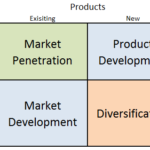 Nvidia Ansoff Matrix is a marketing planning model that helps the GPU producer to determine its product and market strategy. According to Ansoff Matrix there are four different strategy options available for businesses. These are market penetration, product development, market development and diversification. Ansoff Growth Matrix Within the scope of Ansoff Matrix, Nvidia uses all four growth strategies in an integrated manner: 1. Market penetration. Market penetration refers to selling existing products to existing markets. The multinational technology company operates in 32 countries directly and sells its products in many other countries through distributors and re-sellers[1]. Popular market penetration strategies used by Nvidia include print and media advertising, sales promotions, marketing events and experiences, as well as, public relations practices. 2. Product development. This strategy involves developing new products to sell to existing markets. Product development strategy is one of the key growth strategies for Nvidia. In 2021 alone, the company spent over USD 3 billion on R&D, which represented over 20% of its total revenue. Nvidia has invested over USD 29 billion in research and development since its inception.[2] 3. Market development. Market development strategy is associated with finding new markets for existing products and Nvidia uses this strategy to grow the business. Starting only with the US market, the multinational technology company currently operates in 32 countries directly. The company sells its products to many other countries through distributors and re-sellers. 4. Diversification. Diversification involves developing new products to sell to new markets and this is considered to be the riskiest strategy. Nvidia uses diversification extensively, systematically entering new business segments. Starting as 3D graphics producer in 1993, the company expanded product portfolio to produce GPUs in 1999 and immersed itself into AI segment starting from 2012. More recently, Nvidia has further diversified the business to enter cloud…
Nvidia Ansoff Matrix is a marketing planning model that helps the GPU producer to determine its product and market strategy. According to Ansoff Matrix there are four different strategy options available for businesses. These are market penetration, product development, market development and diversification. Ansoff Growth Matrix Within the scope of Ansoff Matrix, Nvidia uses all four growth strategies in an integrated manner: 1. Market penetration. Market penetration refers to selling existing products to existing markets. The multinational technology company operates in 32 countries directly and sells its products in many other countries through distributors and re-sellers[1]. Popular market penetration strategies used by Nvidia include print and media advertising, sales promotions, marketing events and experiences, as well as, public relations practices. 2. Product development. This strategy involves developing new products to sell to existing markets. Product development strategy is one of the key growth strategies for Nvidia. In 2021 alone, the company spent over USD 3 billion on R&D, which represented over 20% of its total revenue. Nvidia has invested over USD 29 billion in research and development since its inception.[2] 3. Market development. Market development strategy is associated with finding new markets for existing products and Nvidia uses this strategy to grow the business. Starting only with the US market, the multinational technology company currently operates in 32 countries directly. The company sells its products to many other countries through distributors and re-sellers. 4. Diversification. Diversification involves developing new products to sell to new markets and this is considered to be the riskiest strategy. Nvidia uses diversification extensively, systematically entering new business segments. Starting as 3D graphics producer in 1993, the company expanded product portfolio to produce GPUs in 1999 and immersed itself into AI segment starting from 2012. More recently, Nvidia has further diversified the business to enter cloud…Nvidia Organizational Culture Overview
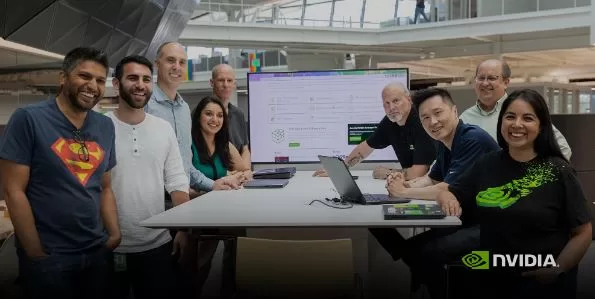 Nvidia organizational culture integrates the following key elements. 1. Innovation. Nvidia is one of the most innovative companies in the world and its organizational culture promotes the spirit of creativity for innovation among employees at all levels. The company encourages employees to think outside the box and come up with new and creative solutions to problems. Consistently producing innovative products and services is a business strategy for NVIDIA and therefore, the company systematically attempts to integrate innovation into the DNA of its organizational culture. 2. Intellectual honesty. The co-founder and long-term CEO Jensen Huang has served as a role model in integrating intellectual honesty within Nvidia organizational culture. For Huang intellectual honesty is critically important to admit mistakes and failures and tolerating them to foster creativity and innovation. Jensen Huang came to appreciate the value of intellectual honesty early on in his career as a head of Nvidia. The first ever product produced by Nvidia simply did not work costing huge amount of investments. It was at that time Huang acknowledged the failure and started everything from the beginning. 3. High-performance. Organizational culture of Nvidia promotes high performance among employees through creating relaxed environment for employees to work. The absence of office politics and hierarchy motivates employees to perform at their best. 4. Inclusion and diversity. CEO Jensen Huang has placed inclusion and diversity at the core of Nvidia organizational culture. Diverse employees at NVIDIA score the company 78/100 across various culture categories, placing NVIDIA in the top 10% of companies on Comparably with 10,000+ Employees for Comparably’s diversity score[1]. Nvidia Corporation Report contains the above analysis of Nvidia organizational culture. The report illustrates the application of the major analytical strategic frameworks in business studies such as SWOT, PESTEL, Porter’s Five Forces, Value Chain analysis, Ansoff Matrix and…
Nvidia organizational culture integrates the following key elements. 1. Innovation. Nvidia is one of the most innovative companies in the world and its organizational culture promotes the spirit of creativity for innovation among employees at all levels. The company encourages employees to think outside the box and come up with new and creative solutions to problems. Consistently producing innovative products and services is a business strategy for NVIDIA and therefore, the company systematically attempts to integrate innovation into the DNA of its organizational culture. 2. Intellectual honesty. The co-founder and long-term CEO Jensen Huang has served as a role model in integrating intellectual honesty within Nvidia organizational culture. For Huang intellectual honesty is critically important to admit mistakes and failures and tolerating them to foster creativity and innovation. Jensen Huang came to appreciate the value of intellectual honesty early on in his career as a head of Nvidia. The first ever product produced by Nvidia simply did not work costing huge amount of investments. It was at that time Huang acknowledged the failure and started everything from the beginning. 3. High-performance. Organizational culture of Nvidia promotes high performance among employees through creating relaxed environment for employees to work. The absence of office politics and hierarchy motivates employees to perform at their best. 4. Inclusion and diversity. CEO Jensen Huang has placed inclusion and diversity at the core of Nvidia organizational culture. Diverse employees at NVIDIA score the company 78/100 across various culture categories, placing NVIDIA in the top 10% of companies on Comparably with 10,000+ Employees for Comparably’s diversity score[1]. Nvidia Corporation Report contains the above analysis of Nvidia organizational culture. The report illustrates the application of the major analytical strategic frameworks in business studies such as SWOT, PESTEL, Porter’s Five Forces, Value Chain analysis, Ansoff Matrix and…Nvidia Organizational Structure: functional and hybrid
 Nvidia is 7th largest company in the world with a market cap of USD 1 trillion. Due to the size and scope of its operations, it is difficult to categorise Nvidia organizational structure within a certain group. However, it is evident that the tech company uses certain elements of functional and hybrid organizational structure. The multinational technology company divides its business practices into various functions such as engineering and product development, supply chain and operations, human resources, finance and accounting and legal and compliance. Functional organizational structure provides a range of advantages for Nvidia. Specifically, employees are assigned into groups on the basis of their competencies and expertise. This allows the groups to achieve their goals with high level of efficiency. Furthermore, functional organizational structure is associated with clear reporting lines and this can enhance the speed and quality of decision making at Nvidia. Nvidia also has certain components of matrix organizational structure in place. Temporary product or project groups are often formed within the multinational technology company and group members report to both, group leader, as well as their direct superiors within the organizational structure. The figure below illustrates the corporate structure of Nvidia: Nvidia Organizational Structure Nvidia Corporation Report contains the above analysis of Nvidia organizational structure. The report illustrates the application of the major analytical strategic frameworks in business studies such as SWOT, PESTEL, Porter’s Five Forces, Value Chain analysis, Ansoff Matrix and McKinsey 7S Model on Nvidia. Moreover, the report contains analyses of Nvidia leadership, business strategy and organizational culture. The report also comprises discussions of Nvidia marketing strategy, ecosystem and addresses issues of corporate social responsibility.
Nvidia is 7th largest company in the world with a market cap of USD 1 trillion. Due to the size and scope of its operations, it is difficult to categorise Nvidia organizational structure within a certain group. However, it is evident that the tech company uses certain elements of functional and hybrid organizational structure. The multinational technology company divides its business practices into various functions such as engineering and product development, supply chain and operations, human resources, finance and accounting and legal and compliance. Functional organizational structure provides a range of advantages for Nvidia. Specifically, employees are assigned into groups on the basis of their competencies and expertise. This allows the groups to achieve their goals with high level of efficiency. Furthermore, functional organizational structure is associated with clear reporting lines and this can enhance the speed and quality of decision making at Nvidia. Nvidia also has certain components of matrix organizational structure in place. Temporary product or project groups are often formed within the multinational technology company and group members report to both, group leader, as well as their direct superiors within the organizational structure. The figure below illustrates the corporate structure of Nvidia: Nvidia Organizational Structure Nvidia Corporation Report contains the above analysis of Nvidia organizational structure. The report illustrates the application of the major analytical strategic frameworks in business studies such as SWOT, PESTEL, Porter’s Five Forces, Value Chain analysis, Ansoff Matrix and McKinsey 7S Model on Nvidia. Moreover, the report contains analyses of Nvidia leadership, business strategy and organizational culture. The report also comprises discussions of Nvidia marketing strategy, ecosystem and addresses issues of corporate social responsibility.Nvidia leadership: a brief overview
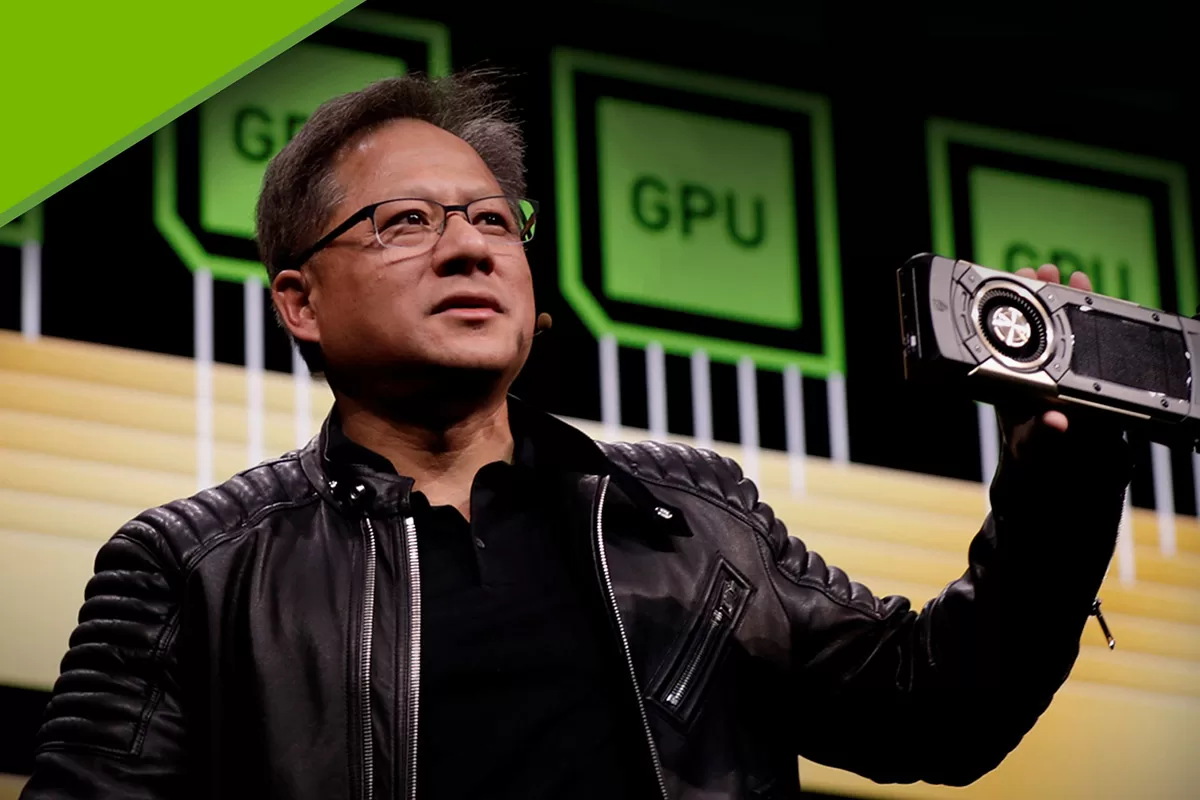 Leadership style at Nvidia is based on the vision and values of its co-founder and long-term CEO Jensen Huang. The leather jacket-clad CEO has been at the helm of Nvidia leadership since 1993. Huang is known for his charismatic leadership style and his ability to inspire and motivate his team. He is deeply involved in the day-to-day operations of the company and is known for his hands-on approach to management. Huang does most of the company-wide presentations and product announcements himself wearing his iconic leather jacket. The CEO is also a strong advocate for innovation and is committed to pushing the boundaries of what is possible with technology. One of Huang’s key strengths as a CEO is his ability to anticipate emerging trends and opportunities in the technology industry. He was an early champion of the potential of graphics processing units (GPUs) for high-performance computing, and he has been instrumental in driving Nvidia’s success in this area. He has also been a vocal advocate for the use of AI in a wide range of applications, from self-driving cars to medical research. Moreover, Huang is known for his ability to build strong partnerships with other companies and to work collaboratively with his team. He has fostered a culture of innovation and excellence at Nvidia, and he is deeply committed to supporting the growth and development of his employees. Celebrating failures is an important element of leadership style at Nvidia. Soon after Huang started the company in 1993, raised the capital and employed 100 people, the technology they developed did not work. Nevertheless, Huang was able to turn around the company by developing new products and the early experience played an important role in cementing corporate culture of intellectual honesty and taking risks. Nvidia Corporation Report contains the above analysis of Nvidia…
Leadership style at Nvidia is based on the vision and values of its co-founder and long-term CEO Jensen Huang. The leather jacket-clad CEO has been at the helm of Nvidia leadership since 1993. Huang is known for his charismatic leadership style and his ability to inspire and motivate his team. He is deeply involved in the day-to-day operations of the company and is known for his hands-on approach to management. Huang does most of the company-wide presentations and product announcements himself wearing his iconic leather jacket. The CEO is also a strong advocate for innovation and is committed to pushing the boundaries of what is possible with technology. One of Huang’s key strengths as a CEO is his ability to anticipate emerging trends and opportunities in the technology industry. He was an early champion of the potential of graphics processing units (GPUs) for high-performance computing, and he has been instrumental in driving Nvidia’s success in this area. He has also been a vocal advocate for the use of AI in a wide range of applications, from self-driving cars to medical research. Moreover, Huang is known for his ability to build strong partnerships with other companies and to work collaboratively with his team. He has fostered a culture of innovation and excellence at Nvidia, and he is deeply committed to supporting the growth and development of his employees. Celebrating failures is an important element of leadership style at Nvidia. Soon after Huang started the company in 1993, raised the capital and employed 100 people, the technology they developed did not work. Nevertheless, Huang was able to turn around the company by developing new products and the early experience played an important role in cementing corporate culture of intellectual honesty and taking risks. Nvidia Corporation Report contains the above analysis of Nvidia…A Brief Overview of Nvidia Business Strategy
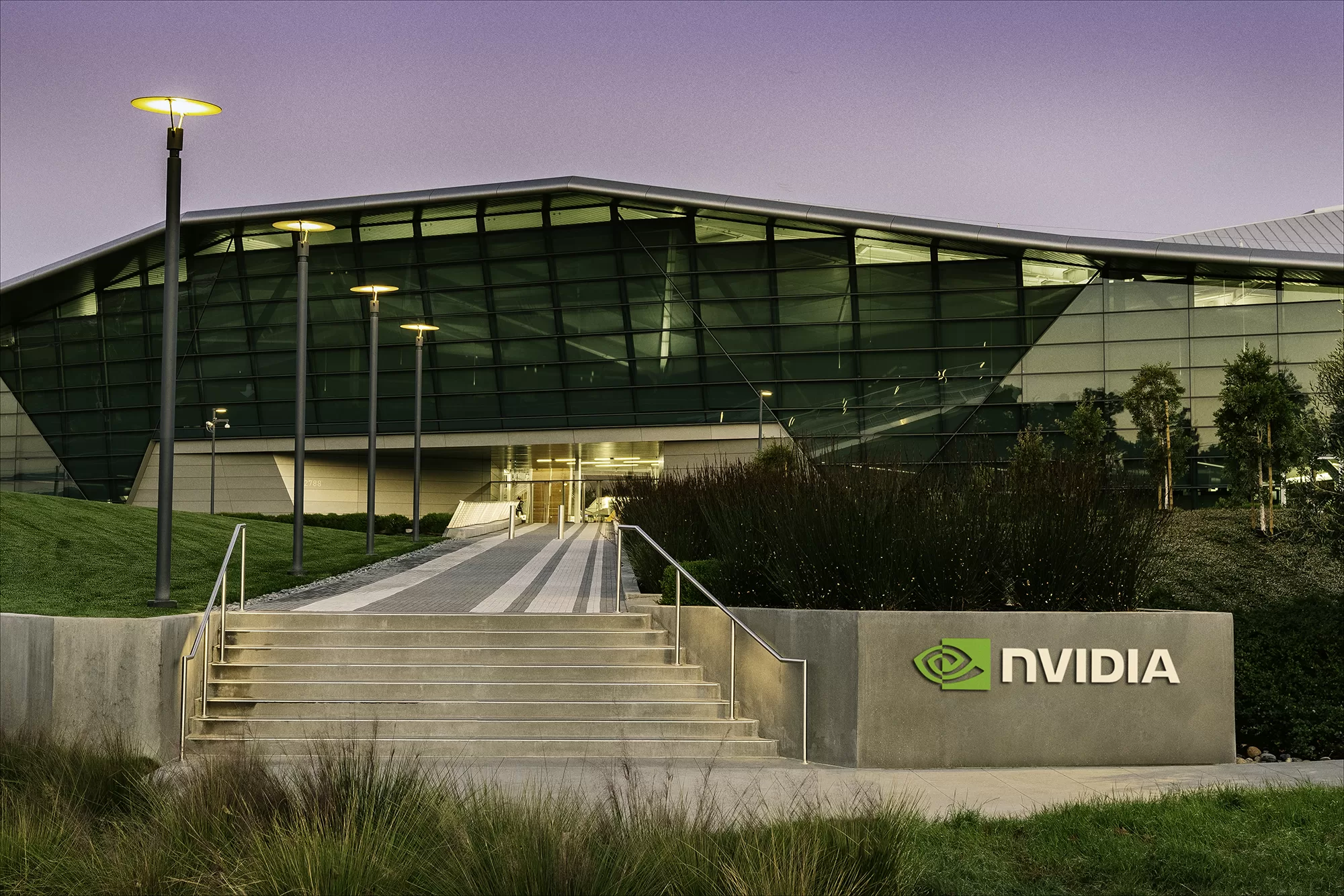 NVIDIA business strategy is based on a platform strategy, bringing together hardware and systems, software, algorithms and libraries, and services to create unique value for the markets it serves. The company specializes in markets in which its computing platforms can provide great acceleration for applications. These platforms include processors, interconnects, software, algorithms, systems, and services to deliver unique value. Nvidia business strategy consists of the following three main elements: 1. Benefiting from the first mover advantage. The multinational technology company has benefited from the first mover advantage numerous times to solidify its position in the market. For example, it popularized the term GPU (graphics processing unit), developed Computer Unified Device Architecture (CUDA) and invented deep learning hardware accelerators, such as the Tesla V100 and T4 GPUs. Benefiting from the fist mover advantage is the core of Nvidia business strategy. 2. Prioritizing performance of products over their costs. Nvidia follows product differentiation business strategy and accordingly focuses on superior performance of its products and services over their costs. In other words, the company’s GPUs, data centre and gaming solutions, Drive and Jetson platforms and professional graphics solutions have the most advanced functions and capabilities, but these come at an additional cost for customers. 3. Vertical integration. The company designs and manufactures its own GPUs and other hardware components through fabless manufacturing, and it develops its own software solutions to optimize performance and enable new applications. Nvidia Corporation Report contains the above analysis of Nvidia business strategy. The report illustrates the application of the major analytical strategic frameworks in business studies such as SWOT, PESTEL, Porter’s Five Forces, Value Chain analysis, Ansoff Matrix and McKinsey 7S Model on Nvidia. Moreover, the report contains analyses of Nvidia leadership, organizational structure and organizational culture. The report also comprises discussions of Nvidia marketing strategy, ecosystem…
NVIDIA business strategy is based on a platform strategy, bringing together hardware and systems, software, algorithms and libraries, and services to create unique value for the markets it serves. The company specializes in markets in which its computing platforms can provide great acceleration for applications. These platforms include processors, interconnects, software, algorithms, systems, and services to deliver unique value. Nvidia business strategy consists of the following three main elements: 1. Benefiting from the first mover advantage. The multinational technology company has benefited from the first mover advantage numerous times to solidify its position in the market. For example, it popularized the term GPU (graphics processing unit), developed Computer Unified Device Architecture (CUDA) and invented deep learning hardware accelerators, such as the Tesla V100 and T4 GPUs. Benefiting from the fist mover advantage is the core of Nvidia business strategy. 2. Prioritizing performance of products over their costs. Nvidia follows product differentiation business strategy and accordingly focuses on superior performance of its products and services over their costs. In other words, the company’s GPUs, data centre and gaming solutions, Drive and Jetson platforms and professional graphics solutions have the most advanced functions and capabilities, but these come at an additional cost for customers. 3. Vertical integration. The company designs and manufactures its own GPUs and other hardware components through fabless manufacturing, and it develops its own software solutions to optimize performance and enable new applications. Nvidia Corporation Report contains the above analysis of Nvidia business strategy. The report illustrates the application of the major analytical strategic frameworks in business studies such as SWOT, PESTEL, Porter’s Five Forces, Value Chain analysis, Ansoff Matrix and McKinsey 7S Model on Nvidia. Moreover, the report contains analyses of Nvidia leadership, organizational structure and organizational culture. The report also comprises discussions of Nvidia marketing strategy, ecosystem…Friday, June 16, 2023
Nvidia Corporation Report
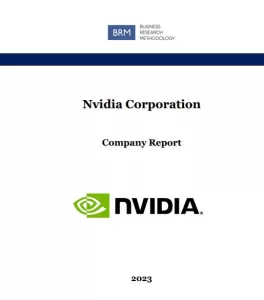 Founded in 1993 by Jensen Huang, Chris Malachowsky and Curtis Priem, Nvidia Corporation is the multinational technology company that aims to solve the world’s visual computing challenges. The GPU maker is the 7th largest company in the world with a market cap of around USD 1 trillion. For fiscal year 2022 the revenue was a record USD 26.91 billion, up 61 percent from USD 16.68 billion a year ago. Gross margins expanded to 64.9 percent, and earnings per share were USD 3.85, up 123 percent from a year ago (Annual Review, 2022) Nvidia business strategy involves benefiting from the first mover advantage, prioritizing performance of products over their costs and pursuing vertical integration. The company’s co-founder and CEO of 30 years Jensen Huang is famous for his charismatic leadership style and his ability to inspire and motivate his team. The multinational technology company has functional and hybrid organizational structure and divides its business practices into various functions such as engineering and product development, supply chain and operations, human resources, finance and accounting and legal and compliance. Nvidia organizational culture integrates the elements of innovation, intellectual honesty, high performance and inclusion and diversity. Within the framework of Ansoff Grow Matrix the company uses all four growth strategies – market penetration, product development, market development and diversification in an integrated manner. The world’s most valuable semiconductor company possesses certain strengths such as global leadership in GPU market, unique position to benefit from the increasing popularity of artificial intelligence (AI) and more than 370 partnerships revolving around self-driving cars. Furthermore, Nvidia possesses advanced R&D capabilities and these allowed the company to reach its current state. At the same time, the software and fables company has serious weaknesses that need to be addressed. At the moment Nvidia depends on a single type of product…
Founded in 1993 by Jensen Huang, Chris Malachowsky and Curtis Priem, Nvidia Corporation is the multinational technology company that aims to solve the world’s visual computing challenges. The GPU maker is the 7th largest company in the world with a market cap of around USD 1 trillion. For fiscal year 2022 the revenue was a record USD 26.91 billion, up 61 percent from USD 16.68 billion a year ago. Gross margins expanded to 64.9 percent, and earnings per share were USD 3.85, up 123 percent from a year ago (Annual Review, 2022) Nvidia business strategy involves benefiting from the first mover advantage, prioritizing performance of products over their costs and pursuing vertical integration. The company’s co-founder and CEO of 30 years Jensen Huang is famous for his charismatic leadership style and his ability to inspire and motivate his team. The multinational technology company has functional and hybrid organizational structure and divides its business practices into various functions such as engineering and product development, supply chain and operations, human resources, finance and accounting and legal and compliance. Nvidia organizational culture integrates the elements of innovation, intellectual honesty, high performance and inclusion and diversity. Within the framework of Ansoff Grow Matrix the company uses all four growth strategies – market penetration, product development, market development and diversification in an integrated manner. The world’s most valuable semiconductor company possesses certain strengths such as global leadership in GPU market, unique position to benefit from the increasing popularity of artificial intelligence (AI) and more than 370 partnerships revolving around self-driving cars. Furthermore, Nvidia possesses advanced R&D capabilities and these allowed the company to reach its current state. At the same time, the software and fables company has serious weaknesses that need to be addressed. At the moment Nvidia depends on a single type of product…